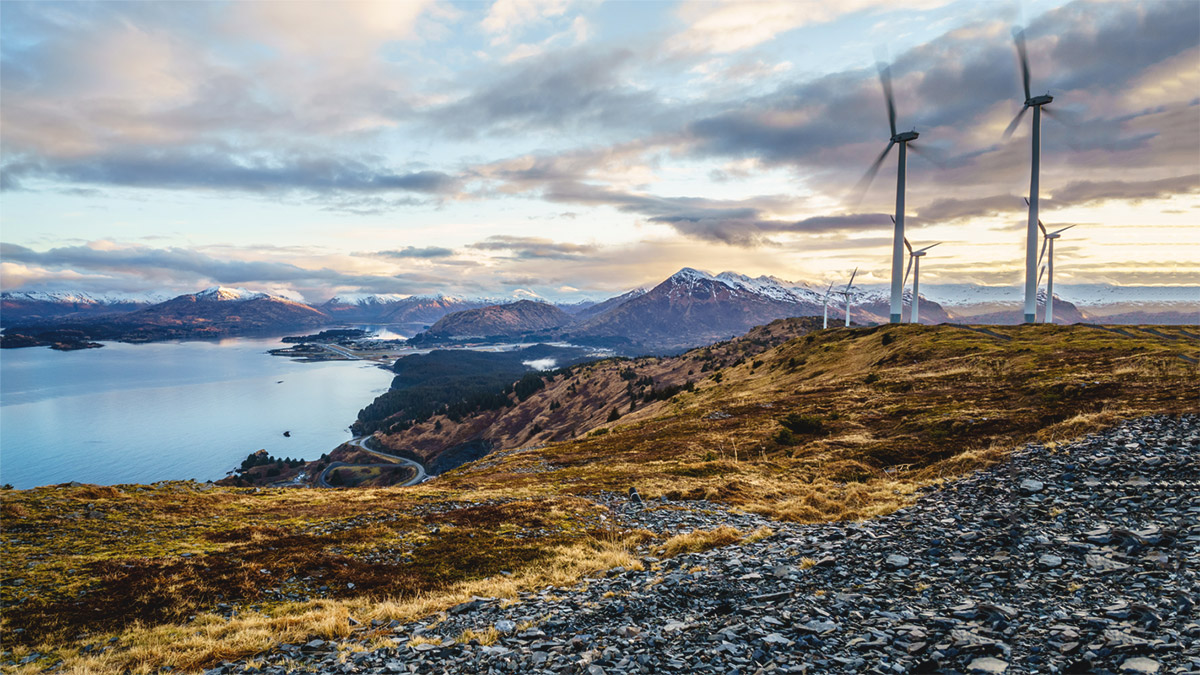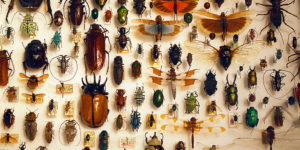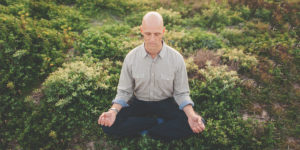Awakening Earth: The Keys to Creating an Enlightened, Sustainable Future That Works For Us All
BY DUANE ELGIN, MBA, M.A.
 in order to develop a sustainable future that works for all life, we must build it on a foundation of higher consciousness and awareness.
in order to develop a sustainable future that works for all life, we must build it on a foundation of higher consciousness and awareness.
The Challenge Of Planetary Civilization
The Earth’s biosphere is being severely wounded, even crippled, by humanity. Yet through humanity, the Earth is awakening as a conscious global organism. These two facts are intimately related: pushed by the harsh reality of an injured Earth, the human family is being challenged to realize to a new level of identity, responsibility, and purpose.
The human family confronts a future of great opportunity and great peril. On the one hand, a communications revolution is sweeping the planet, providing humanity with the tools needed to achieve a dramatic new level of understanding and reconciliation that, in turn, can support a future of global sustainable development. On the other hand, powerful countervailing trends are also at work—climate change, overpopulation, dwindling reserves of oil, the ruin of rainforests, soil erosion, ozone depletion, and many more. In the next few decades these driving trends will either devastate or transform the economic, cultural, and political fabric of the planet. It is bewildering to see how quickly economic progress has turned into ecological devastation. Yet, with a deteriorating biosphere already stretched past the limits of its ability to carry the burden of humanity, the views and values that have served us so well in the past must now be reconsidered.
If the Earth is to awaken in good health and a sustainable future, then we need to stand back, look at the larger sweep of human evolution, and ask ourselves basic questions: Who are we? What are we doing here? What is the nature and purpose of human evolution? Where do we go from here as a species? Are we destined to wander blindly into the future, or are there major stages along the way that we can anticipate? Is the universe coldly indifferent to our struggles, sufferings, and joys—or is it compassionately non-interfering?
Although answers to these questions must be conjectural, there is a story of human evolution emerging from the enduring wisdom of the world’s spiritual traditions as well as from new insights in science that suggests we are involved in a highly purposeful process of development. Just as there are recognizable stages in the movement of an individual from infancy to early adulthood, so, too, do there seem to be stages of learning that describe our maturation as a species. As told in this book, humanity’s story has seven distinct chapters that describe our evolution from awakening hunter-gatherers to our initial maturity as a planetary-scale civilization. In my view humanity is roughly halfway through seven stages of development that must be realized if we are to experience a sustainable future and become a planetary civilization that is able both to maintain itself and to surpass itself into the distant future.
Discovering the story of our evolutionary journey is vital. Confronted with a global crisis and lacking a vision of a sustainable future, we can lose confidence in ourselves, our leaders, and our institutions. A disoriented world civilization faced with dwindling resources, mounting pollution, and growing population is a recipe for ecological collapse, social anarchy, religious fanaticism, and authoritarian domination. We need to get our bearings for the journey ahead if we are to move swiftly towards our early adulthood as a planetary civilization.Sustainability—and Beyond
To be sustainable in its development, a civilization must maintain the integrity of the physical, social and spiritual foundations upon which it is established. To seek only to survive—to do no more than simply exist—is not a sufficient foundation for long-term sustainability. An insight from Simone de Beauvoir clarifies our challenge: “Life is occupied in both perpetuating itself and in surpassing itself; if all it does is maintain itself, then living is only not dying.” If we do no more than work for a sustainable future, then we are in danger of creating a world in which living is little more than “only not dying.” To engage our enthusiasm for evolution, we must look beyond sheer survival—we need a compelling sense of purpose and potential for living together as a world civilization.
If industrial societies are to turn away from materialism and commercialism as organizing values, then other values and purposes are needed that are at least as compelling. The survival and integrity of our biosphere, the quality of life for our children and friends, and the coevolution of culture and consciousness—these are life purposes that offer a sustainable future and a powerful alternative to those of the industrial era. There is growing evidence that a substantial majority of the human family would support this shift in life orientation. For example, a Gallup poll for the first “Earth Summit” in 1992 surveyed people in twenty-two diverse nations around the planet and found that in all but three, a majority is “increasingly worried about the global environment and gives its protection priority over economic growth.” For a majority of humans, representing a wide range of income levels, to place the well being of the Earth ahead of their personal economic concerns shows that a dramatic shift in values and priorities is taking place around the world—a shift that is concerned with creating a sustainable future.

Although humanity is expressing growing concern for protecting the Earth’s environment, we do not yet have a shared vision of how to build an advanced, global civilization while simultaneously restoring the health of the biosphere. We do not have a vision of the future that is sufficiently realistic, comprehensive, and compelling to be able to coalesce the enthusiasm of the human family into a process of sustainable and surpassing development. We have economic forecasts, but these are bloodless projections that do not inspire civilizations to reach new heights. We have projections for single issues—the prospects for the rainforests, AIDS, education, health care, and so on—but we don’t have comprehensive visions of the whole planetary system that portray how humanity can live together successfully. We have technological forecasts— trends for computers, cars, air travel, nuclear technology, and so forth—but we have few integrative views that combine technology, psychology, spirituality and sociology into persuasive scenarios of a diverse, creative and sustainable future.
When we can collectively envision a sustainable and satisfying pathway into the future, then can we begin to construct that future consciously. We need to draw upon our collective wisdom and discover images of the future that awaken our enthusiasm for evolution and mobilize our social energies. By drawing upon the world’s growing body of wisdom—in biology, anthropology, history, physics, systems theory, comparative religions, and so on—we can begin to discern the overall direction of human evolution that leads toward our maturity as a planetary civilization. With a clear vision of a positive sustainable future, we can proceed with confidence on our evolutionary journey.
If humanity is successful in building an enduring civilization on the Earth, then it will come from the synergy of the collective experience and wisdom of the entire human family—the entire species. The world has become so interdependent that we must make it together, transcending differences of race, ethnicity, geography, religion, politics and gender. It is the human species that is devastating the planet, and it is the entire species that must learn to live together as a civilized and mutually supportive community. To focus on the development of civility among the human species is not to unduly inflate the importance of humanity within the ecosystem of life on Earth; rather, it is to recognize how dangerous humanity is to the viability of the Earth’s ecosystem. Humanity must begin consciously to develop a planetary-scale, species civilization that is able to live in a harmonious relationship with the rest of the web of life.A New Paradigm for Evolution
Two views of evolution—materialism and transcendentalism—are dominant in the world today; but a third view is emerging that integrates them both into a co-evolutionary perspective. All three paradigms involve assumptions regarding not only our material and biological nature but also our consciousness and spiritual nature.
1. Materialist View—In this view, prominent in Western industrial societies, matter is considered the primary reality. Consciousness is secondary and is thought to emerge with high levels of complexity in the organization of brain matter. As the astronomer Carl Sagan writes, “My fundamental premise about the brain is that its workings—what we sometimes call ‘mind’—are a consequence of its anatomy and physiology, and nothing more.”
Philosopher Daniel Dennett compares human consciousness to a “virtual machine,” a sort of computer software program that shapes the activities of the hardware system, the brain. The materialistic paradigm views evolutionary progress in terms of material achievements in science, architecture, art, literature, and so on.2. Transcendentalist View—In this view, prominent among many ancient Eastern religions and contemporary “new age” spiritual movements, consciousness is believed to be the primary reality and matter is secondary. The material world is seen as being constructed from consciousness, so undue attention to material things represents a distraction from, and a substitute for, the unfolding of consciousness. Evolutionary progress is a journey of transcendence that moves from matter to body to mind to soul to spirit.
3. Co-evolutionary View—In this emerging view, which integrates East and West, reality is seen as being comprised equally of matter and consciousness, which are in turn assumed to be continuously regenerated by the more fundamental reality—an infinitely deep life-force that is called here the “meta-universe.” The evolutionary journey involves the synergistic development and refinement of both the material and the consciousness aspects of life. With their co-evolution we ultimately discover that we are identical with the vast and subtle life-force from which everything continuously arises and can move toward a more sustainable future for all life.
Each view of evolution has a dramatically different social expression. The materialistic paradigm emphasizes material growth, unsustainable development and growth, worldly expressions of significance, status, and power. The transcendentalist paradigm emphasizes rising above the material world with its seeming distractions and substitutions for the perfect peace of ultimate transcendence. The co-evolutionary paradigm integrates the material and consciousness aspects of life into a mutually supportive spiral of development that can produce a sustainable future, planetary civilization and a global “wisdom culture.” Basic to the co-evolutionary paradigm is the idea that, moment-by-moment, the entire cosmos is being regenerated by an infinite field of life-energy that is called here the meta-universe. The meta-universe is assumed to have been present before the big bang and is the generative ground out of which our universe (including the fabric of space-time) emerges in a flow of continuous creation. The meta-universe thus infuses, underlies and transcends our cosmos. As a further note of definition, I will use the term universe to refer to the still-expanding system that emerged roughly fifteen billion years ago with the Big Bang. Although I will use the term cosmos to refer to the same system as the “universe,” I often use that word to communicate an extra measure of appreciation for the aesthetic structure and purposeful harmony evident in the design of the universe.
We need to return to these basics of definition because the old approaches are no longer working in isolation from one another. For the past several thousand years the materialistic view has been dominant in the West and the transcendentalist view has been dominant in the East. Our time of planetary crisis demonstrates that both views have exhausted their evolutionary potential in isolation from each other. We need to move into a new era of co-evolutionary sustainable development that integrates them both into an organic whole. The West has pursued external, material growth without a balanced regard for the interior human potentials and the result has too often been a life-denying and self-serving social order that is exhausting its vitality and sense of direction. The East has pursued the evolution of internal consciousness without a balanced regard for the exterior human potentials of material and social growth and the result is that the development of consciousness has too often become a spiritual escape for the few, leaving many locked in a struggle for sheer survival. Where the West has concentrated on the finite and the momentary, the East has concentrated on the infinite and the eternal. The Eastern approach has been world-denying in its excessively transcendental orientation, while the Western approach has been world-destroying in its excessively materialistic orientation.
To achieve a balanced and sustainable future way of living, each perspective requires the participation of the other. Only if they are joined together can they reach beyond themselves to a new, unifying paradigm, involving neither the material passivity of the transcendentalist perspective nor the all-consuming worldly obsession of the materialist perspective. A co-evolutionary perspective fosters entirely new dimensions of sustainable development. If the human family rises to this integrative challenge, we will embark on a breathtaking evolutionary journey—one that would not have been possible, and could not have been imagined, by either perspective working in isolation. The energy and creativity released by combining a balanced concern for the material and consciousness aspects of life are not simply additive, they are synergistic. In the partnership of the material and consciousness dimensions are the seeds of a new era of human growth that we have only scarcely begun to envision and explore. A co-evolutionary perspective reveals an elevated pattern and purpose to human evolution that can guide us toward a future bursting with creative possibility.
“Knowing That We Know” or Humanity’s Double Wisdom
We can get a clearer sense of direction for humanity’s evolutionary journey to achieve a sustainable future by considering the scientific name we have given to ourselves as a species: Homo sapiens sapiens. We are accustomed to the phrase Homo sapiens, but our full designation is Homo sapiens sapiens. To be “sapient” is to be wise or knowing. We humans describe ourselves as being more than sapient or wise, we are sapient sapient and have the unique potential of becoming “doubly wise” or “doubly knowing.” Our highest potential as a species is our ability to achieve full self-reflective consciousness or “knowing that we know.” As humanity develops its capacity for reflexive consciousness, it enables the universe to achieve self-referencing knowing of itself. Through humanity’s awakening, the universe acquires the ability to look back and reflect upon itself—in wonder, awe and appreciation.
Development of our capacity for reflective knowing is a complex and multifaceted process. We are moving through a series of stages, each of which draws out different aspects of this potential. As we develop our capacity for reflective knowing, we acquire new levels of mastery in our personal and social evolution; for example, an enhanced capacity for self-determination, reconciliation, cooperation and creativity. With reflective knowing comes a double registering of experience and the ability to assess the appropriateness of our actions against the guide of our own knowing. With reflective consciousness, we become self-directing agents of our own evolution who are more than capable of building a sustainable future.
Reflective consciousness is basic to social as well as to personal evolution. For example, in a democracy, when we are informed as individual citizens, then we “know.” However, when we communicate among ourselves as citizens—publicly learning about and affirming our collective sentiments as an extended community—then we “know that we know.” In our dangerous and difficult time of transition into sustainable development, it is not sufficient for civilizations to be wise, we must become doubly wise through social communication that clearly reveals our collective knowing to ourselves. To do this, we need to consciously use our mass media for vigorous public learning and dialogue regarding the critical choices for our future. Developing our capacity for reflective consciousness, both personally and socially, is a paramount evolutionary challenge.
Steps to Our Initial Maturity as a Planetary Civilization: The 7 Stages of Development
It will be helpful to gain some perspective by summarizing the broad outlines of human history thus far. For roughly two million years our ancestors struggled in the twilight of self-recognition and self-discovery. Then, sometime during the rugged conditions of the last great ice age, roughly 35,000 years ago, physically modern humans broke free from the limited consciousness of the animal kingdom. With this initial awakening we entered an epoch of growth lasting nearly 25,000 years, during which time we developed sophisticated language, art, trading networks, musical instruments and new tools of stone, wood, and bone.
Then, roughly 10,000 years ago, we began another momentous transition by gradually shifting from the nomadic life of gathering and hunting to a settled life in small villages that relied upon subsistence agriculture for survival. Sustainable development and a peaceful and simple village life endured for thousands of years when, with surprising abruptness, the world’s first large cities arose roughly 5,500 years ago. With the blossoming of agrarian-based civilizations, a new level of drive and dynamism entered the world. Humanity’s evolutionary journey moved out of immersion within nature began to take on a character that was uniquely human. Major civilizations emerged in Mesopotamia, India, China and the Americas. For nearly 5,000 years these agrarian-based civilizations matured, generating the bulk of recorded human history. The next momentous leap forward began roughly 300 years ago, when a revolution in science and technology propelled a portion of humanity into the urban-industrial era. The gradual pace of urbanization and material development was transformed into an explosion of technological progress, moving forward with such ferocity and speed that it now threatens to devastate the entire biosphere of the planet.

If we stand back from these immensely complex historical dynamics, there seems to be a relatively simple process of development under way that involves three major phases in the evolution of culture and consciousness. The first phase lasts for several million years and is the time when our human-like ancestors lived without any appreciable degree of self-recognition or reflective consciousness. The second phase began roughly 35,000 years ago when humanity became decisively self-aware and we moved into an era of rapid and less sustainable development. Since then we have been working through a series of developmental stages, increasing our capacity for reflective consciousness and building corresponding forms of civilization. Looking ahead, when we develop the full spectrum of capacities associated with reflective consciousness, we will then move into a third phase of “post-reflective consciousness,” or integral awareness with the wisdom essential for creating a sustainable future into the distant future.
Humanity appears to be working its way through a relatively brief but critical phase of development. Millions of years were required to get to this transitional phase of evolution, and if we are successful in realizing its potentials, millions of years of future sustainability can follow. Hopefully the intermediate phase will be little more than a scratch on humanity’s evolutionary calendar.
To fully coevolve our capacity for self-referencing consciousness along with a supportive planetary culture, I believe that humanity must work through seven major stages of development. Described simply, these are as follows:
+ Era of Awakening Hunter-gatherers—Roughly 35,000 years ago humanity awakened with a distinct capacity for self-reflective consciousness. Nonetheless perceptions were extremely limited, social organization was on a tribal scale, and life was centered around a gathering and hunting existence. Nature was viewed as intensely alive and filled with mysterious forces.
+ Era of Agrarian-Based Civilizations—Roughly 10,000 years ago human perception expanded to include a new sense of time—a wheel of existence that embraced nature’s seasons and cycles—and a farming consciousness emerged. With the development of systematic agriculture and a food surplus, the world’s first great cities began to appear around 3,500 B.C. and developed all the basic arts of civilization (for example, writing, division of labor, a priestly class, religion, city state governments, and massive architecture).
+ Scientific-Industrial Era—By the 1700s in Europe nature’s mystery and magic were giving way to impersonal science and the analyzing intellect. A progressing time sense coupled with a materialistic view of reality fostered an unprecedented emphasis on material progress, which moved in the direction of an unstainable future. Technical innovation brought with it the rise of mass production, the extreme division of labor, the unsustainable development of massive urban centers, and the rise of strong nation-states.
+ Communications and Reconciliation Era—Given the pervasiveness of television, computers and satellite systems around the planet, people in both agrarian and industrial societies are being swept up in the communications revolution. The opportunity for global communication provided by these new technologies is arriving just in time to allow the human family to enter into serious dialogue about how to cope with the intertwined system of problems that threaten our collective future. With communication we can discover a shared vision of a sustainable future. With reconciliation we can build the trust and sense of human community that will be essential for creating a future of mutually supportive development.
+ Bonding and Building Era—After reconciliation comes rebuilding. In working together to translate the vision of a sustainable future into tangible reality, humanity will naturally develop a strong sense of community, compassion, and deep bonding. Cross-cultural learning and planetary celebration will flourish. People will also feel a new depth of connection with nature and will work to restore the integrity of the global environment.
+ Surpassing Era—With the sustainability of the planet assured, a new level of human creativity will be liberated. Planetary civilization will move beyond a concern for maintaining itself to a concern for surpassing itself. This will be an era of explosive growth as the creativity of billions of persons is set free. Given the creative tumult, the strong bonding achieved in the previous epoch will be essential to keep the world from swirling out of control and tearing itself apart. Humanity will learn to balance the drive for creative diversity with the need for sustainable unity and development.
+ Initial Maturity as Planetary Civilization—In reaching this stage, humanity will have acquired sufficient perspective, wisdom, creativity, and compassion necessary to sustain itself into the distant future. This stage represents both the completion of a long process of development and the foundation for a new beginning, perhaps to participate in a community of life of galactic scale.
This is not a linear view of sustainable development; rather, it portrays a complex cycle of separation and return that leads to our initial maturity as a species: In the three beginning stages of awakening, we separate ourselves from nature, develop our sense of autonomy as a species, and discover of our abilities for rebuilding the world in accord with our designs. In the following three stages, we reintegrate ourselves with nature, explore our deep bonding with one another and with the cosmos, and develop our capacity to act in conscious harmony with the universe.
Whether we are successful in filling out these evolutionary stages and developing a sustainable future or whether we get off track and move into a dark age of stagnation and collapse will depend on the choices we now make freely. Our evolution is similar to a seven-stage rocket: Each of the booster stages must work properly if we are to be successful in launching a sustainable species-civilization. If any one of the stages fails, the evolutionary dynamic can veer off into stagnation or collapse. Arnold Toynbee spent a lifetime examining the emergence and decline of civilizations throughout history and described civilization as “a movement and not a condition, a voyage and not a harbour.”
He also noted that the people and events that make good headlines tend to float on the surface of the stream of life, whereas it is the deeper changes, working below the surface of popular culture, that ultimately make history. Consistent with Toynbee’s insight, the seven stages of development described above are assumed to be the organizing paradigms that live beneath the surface of popular culture and whose potentials we are working to realize. While this approach bleaches out much of the complexity and richness found in the rise and fall of individual civilizations, it will reveal more clearly the step-by-step advance of culture and consciousness as we work to become a doubly-wise species-civilization. At the core of our history as a species is the story of our movement through a series of perceptual paradigms as we work to achieve our initial maturity as a self-reflective and self-organizing planetary civilization.
Building a Sustainable Future: The 6 Key Needs
The sustainability crisis is now viewed largely in terms of dwindling resources, mounting pollution, population growth, and other physical indicators that measure the Earth’s ability to support the burden of humanity. Although these are of critical importance, they do not go to the heart of our situation. More basic is an invisible crisis in the consciousness and culture of humanity. Until we come to terms with the nonmaterial aspects of our crisis, we will not be able to make the many material changes required to build a sustainable future. Here are six priority needs for building a sustainable and satisfying future:
+ Breaking the Cultural Hypnosis of Consumerism—The mass media are aggressively promoting a consumerist mentality in developed nations. In the United States the average person sees more than 35,000 commercials a year, most of which are ads for a high-consumption lifestyle as well as a pitch for a product. We need a new social ethic that holds the mass media accountable for its programming of our civilization’s consciousness with antisustainability messages. We need to counter this cultural hypnosis with programming and advertising that foster a sustainability consciousness. From documentaries to dramas to “Earth commercials,” we need to use the mass media to awaken and sustain a new understanding and caring for the planet and for the future.
+ Ecological Ways of Living—We need actively to envision new ways of living that reflect our understanding that the Earth will be humanity’s home for countless generations into the future. We need to invent new patterns of ecological living that moderate our impact on the Earth—from the design of our homes and neighborhoods to the food we eat, the clothes we wear, the transportation we use, the work we do, and much more. To design our way into the future consciously offers an inspiring challenge—an exciting experiment in intentional living that can bring forth our most creative potentials.
+ Compelling Visions of a Sustainable Future—We cannot build a future consciously that we have not first imagined. Many people can visualize a future of worsening crisis—ecological destruction, famines, civil unrest, and material limitation—but few have a positive vision of the future. Without a hopeful future to work toward, people will tend to withdraw into a protected world for themselves and focus on the short run. We need to see that with new patterns of consumption, housing and community, work and livelihood, we can create a sustainable and a satisfying future. These visions of the future need to involve more than “only not dying”— we need to see how we can both maintain and surpass ourselves and thereby continue our evolution toward our initial maturity as a planetary civilization.
+ Conscious Democracy—To choose a sustainable future, we need a revitalized democracy that engages citizens in a whole new level of dialogue and decision making through innovative use of our tools of mass communication. We need to energize the conversation of democracy by developing regular electronic town meetings with effective forms of feedback from citizens. As citizens come to know their own minds on issues and priorities, representatives in government can work with greater confidence to develop policies for a sustainable future. With active communication we can achieve the level of mass consensus, cooperation, and coordination needed to adapt our patterns of living to the new global realities.
+ Nurturing a Reflective Perceptual Paradigm—We need to cultivate a witnessing consciousness that is able to stand back and directly experience the Earth as a tightly interconnected and living system that deserves great care and respect. In seeing the Earth as alive and worthy of reverence, we will cultivate a mind-set that naturally promotes the frugal and judicious use of resources and that safeguards all life on the planet.
+ Reconciliation—Humanity is profoundly divided between: the rich and the poor, racial groups, ethnic groups, religious groups, men and women, current and future generations, and many other polarities. We need to use face-to-face communication, as well as our tools of electronic communication, to achieve a new level of reconciliation as a human family that gives us a fresh start for moving ahead. The communications revolution will leave no place on the planet to hide from these realities. Nearly every dwelling will have an intelligent and interactive “picture window” that opens with stark clarity onto the world’s divisions and suffering billions. If humanity is to work together cooperatively, we must learn to accept our diversity—racial, ethnic, generational, religious, sexual, cultural, geographic, and more. Without reconciliation our efforts to achieve sustainability will be stalemated and stalled.
When we have broken the cultural hypnosis of consumerism and can envision ecological ways of living, and when these modes of living connect with a clear vision of a sustainable future for the Earth that we co-create with other citizens through the ongoing conversation of a conscious democracy, and when we have the objectivity of a witnessing or reflective consciousness and can achieve reconciliation among the diverse members of the human family, then we have a realistic basis for making the technological and material changes required for building a sustainable future.
Final Thoughts: A Summary
Although the human family is only roughly halfway through the stages of growth required to move from pre-reflective consciousness to integrated awareness, our initial maturity as a species may be closer than we think. Summarizing our evolutionary journey thus far: Roughly 2.5 million years were required for our earliest ancestors to move from the first glimmerings of self-recognition to decisive awakening in the initial stage of reflective consciousness. It then took about 30,000 years for physically modern humans to move through the stage of awakening hunter-gatherers; approximately 5,000 years to move through the stage of agrarian-based civilizations; and then around 300 years for a number of nations to move through the stage of industrial civilization.
Because the pace of evolution is accelerating enormously, the past is not an accurate guide to the future. If we do not veer off onto some evolutionary detour, then it is conceivable that within a very brief period of time (perhaps five hundred years, or a dozen generations or so) we could build a sustainable future and creative planetary civilization, that celebrates the many threads that make up the tapestry of its rich character.
We are rapidly approaching one of the most momentous occasions in the evolution of life on any planet—the inevitable “evolutionary inflection” where an arduous process of withdrawing from nature makes a decisive shift toward an equally demanding journey of returning to live in harmony with nature. The inflection represents a unique pivot point in human history where evolution finally becomes decisively conscious of itself as a planetary-scale process, begins to intentionally direct itself, and begins to deliberately shift from a pathway of separation to a pathway of reconciliation.
The period of inflection is reached when our material powers become so great that they progressively destroy the ecological foundations of life on the planet and make it essential for us to work together as a species in a common task of survival. By my reckoning, humanity will likely “hit the wall”—or run into unyielding limits to material growth and be forced to squarely confront the imperative for pervasive change—in roughly the decade of the 2020s.
How humanity prepares for this unique evolutionary shift toward what I hope is a sustainable future will be a real and visible test of our evolutionary intelligence as well as our capacity for compassion and creativity. To move onto a pathway of sustaining and surpassing development will require the enthusiastic involvement of billions of people. Therefore the concerns raised in this broad review of human evolution are ultimately very personal.
Who we become as a planetary civilization will depend directly upon our actions as a global community of individuals. We each have unique talents—and correspondingly unique responsibilities—for participating in the unfolding of life. The awakening of the Earth now depends directly upon the citizens of the Earth acting in concert with one another to build the foundations of a sustainable future. Each individual needs to tithe a significant portion of their time and talent to the healthy coevolution of the planet.
Millions of years lie behind us, bringing us to this moment in human history; and millions of years could lie before us, unfolding a future whose nature may well pivot upon choices we make now. We do not need to belabor the stages of learning and growth that remain. With diligent efforts, a sustainable, compassionate, and creative world civilization could become established within perhaps half a millennium. However, before we reach that stage of dynamic stability, humanity’s mastery of the dimensional complexities of the evolutionary process will be challenged repeatedly. What an exciting, demanding, and rewarding journey stretches out before us.
This article on developing a sustainable future is excerpted from Awakening Earth: Exploring the Evolution of Human Culture and Consciousness by Duane Elgin.
About The Author
Duane Elgin, MBA, M.A. is an internationally recognized speaker, author, and social visionary who looks beneath the surface turbulence of our times to explore the deeper trends that are transforming our world. In 2006, Duane received the International Goi Peace Award in Japan in recognition of his contribution to a global “vision, consciousness, and lifestyle” that fosters a “more sustainable and spiritual culture.” Visit his website duaneelgin.com























